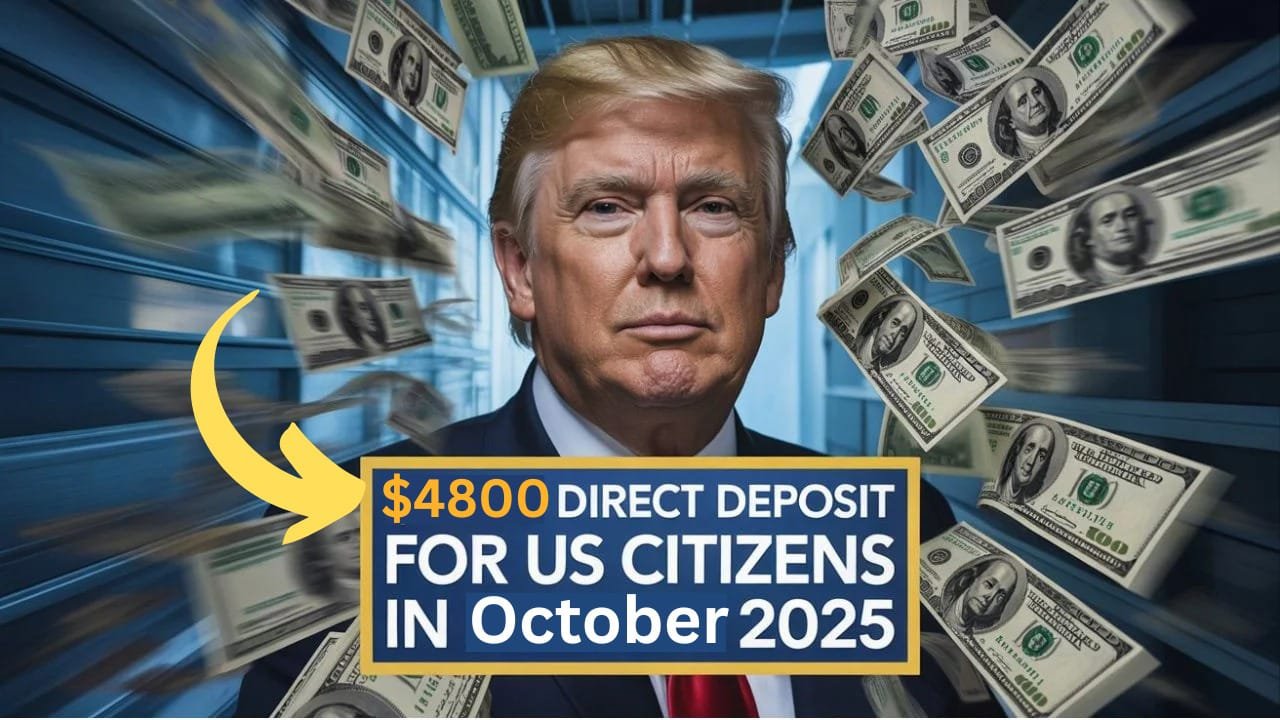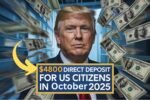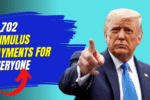$4,800 direct deposit checks are coming in October 2025 : In a surprising and welcome announcement, millions of Americans could receive a direct deposit of $4,800 into their bank accounts starting in October 2025. With inflation still rampant and wage growth lagging, this initiative is being considered one of the most significant direct cash assistance efforts in recent years.
But who is eligible, and what’s the reason behind these large payments? Here’s everything you need to know—plus, how real people are reacting to this much-needed financial aid.
A One-Time Boost — But With Big Impact
The $4,800 direct deposit checks are part of a federal relief initiative passed quietly in the summer of 2025. While not labeled as a “stimulus check” in the traditional sense, it serves a similar purpose: offering direct financial support to households still recovering from the lasting economic effects of the pandemic years, supply chain disruptions, and the more recent spike in housing and healthcare costs.
Officials are calling it the “Cost of Living Adjustment Rebate” — and while the name is bureaucratic, the intention is clear: help Americans breathe a little easier.
Who is eligible for $4,800?
According to the Treasury Department and the IRS, eligibility is based on 2024 tax returns and income limits. The main qualifications are:
- Individuals with annual incomes of $75,000 or less
- Married couples filing jointly with incomes of up to $150,000
- Heads of households with incomes of up to $112,500
- Must have filed a 2024 tax return by July 15, 2025
- Must be a U.S. citizen or permanent resident
Under additional provisions, this payment is also available to eligible Social Security recipients, disabled veterans, and retirees, even if they are not required to file taxes—provided they meet the income and residency criteria.
How will the payments be made?
The $4,800 payments will be deposited directly into recipients’ bank accounts beginning October 15, 2025, and the first wave will reach approximately 40 million Americans. Those who don’t have direct deposit information on file will receive paper checks or preloaded debit cards by mail, though this may take a few weeks longer.
Treasury officials have urged people to double-check their banking information through the IRS portal to avoid delays.
A Big Change for Real People
For many Americans, this money isn’t a luxury—it’s a lifeline.
Samantha Torres, a single mother of two in Albuquerque, says this check will provide her with financial relief for the first time in years.
“Between rent, groceries, and school expenses, there’s nothing left at the end of the month. This check means I’ll be able to meet my needs—maybe even save for once,” she says.
James Patel, a retired soldier from Ohio, says he plans to use the money for long-overdue dental work and car repairs.
“It’s not about wants. It’s about needs. It feels like someone finally sees us.
Critics say it’s not enough—or too much.
Like any major government program, it has received mixed reactions.
Some lawmakers argue that these payments are insufficient, especially in high-cost states like California and New York, where $4,800 barely covers a month’s rent. Others, mostly fiscal conservatives, are concerned about the impact on the federal deficit.
But economists like Dr. Marlene Cho of the Brookings Institute believe the benefits outweigh the risks.
“Direct payments are typically spent immediately—providing a boost to the local economy. They are targeted, timely, and timely.”
Looking Ahead: A One-Time Deal?
For now, the $4,800 checks are a one-time payment, and there is no guarantee of further payments in 2026. However, depending on the economic landscape and the political climate after the 2025 elections, some are hoping this will be the start of more sensitive, need-based relief programs.
What you should do now
If you think you might be eligible, here are three easy steps:
Make sure your 2024 taxes are filed and up-to-date.
Verify your banking information on the IRS “Get My Payment” portal.
Be prepared for an email or mail from the IRS confirming your status.
Final Thoughts
At a time when every dollar counts, the $4,800 direct deposit coming in October 2025 could be more than just money, but a ray of hope. For many Americans, it’s a sign that someone in Washington still understands what it’s like to live paycheck to paycheck.
Whether it’s used to pay off debt, stock up on essentials, or finally get some relief, this payment is poised to bring a human touch back to economic policy.





